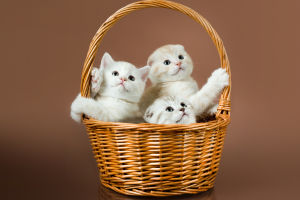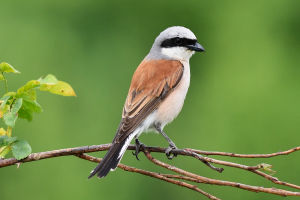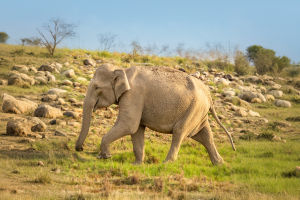Hey Lykkers! As cat lovers, we know how important it is to keep our feline friends healthy and happy. One of the most essential parts of taking care of our cats is choosing the right food.
Just like us, cats need a balanced diet to thrive, and the food we choose plays a major role in their overall well-being.
So, whether you're a new cat owner or a seasoned pro, let's talk about why cat food is so important and how we can make the best choices for our pets.
1. Understanding Your Cat's Nutritional Needs
Cats are obligate carnivores, which means they rely on meat as their primary source of nutrition. Unlike dogs or humans, they can't survive on a vegetarian diet. This is why it's crucial to select a cat food that provides the right balance of protein, fats, and essential nutrients to keep them strong and healthy.
When choosing cat food, we want to look for formulas that are rich in animal-based protein. Look for foods where chicken, turkey, or fish are listed as the first ingredients. These proteins support your cat's muscle development and overall energy levels. Additionally, the food should contain healthy fats like omega-3 fatty acids, which promote a shiny coat and healthy skin.
2. Types of Cat Food: Wet vs. Dry
When it comes to cat food, there are two main types: wet food and dry food. Each has its own benefits, and the best choice depends on your cat's specific needs.
Wet food is packed with moisture, which is great for cats who don't drink enough water. Since cats often have low thirst drive, wet food can help keep them hydrated. It's also typically higher in protein and lower in carbs, making it closer to what they'd eat in the wild.
On the other hand, dry food is more convenient and has a longer shelf life. It can help with dental health, as the crunchy texture helps reduce plaque buildup. However, it's important to make sure your cat has access to plenty of fresh water if you choose to feed them dry food.
Many cat owners choose to feed a combination of both to get the benefits of each type, and that can work well for most cats.
3. Special Diets for Cats with Health Concerns
Just like us, cats can have specific health needs that require special diets. If your cat has a medical condition, it's important to consult with your vet before choosing food. For example, cats with kidney disease may need a low-protein diet, while cats with food allergies might require a hypoallergenic formula.
There are also food options designed for weight management, digestive health, and even hairball control. These diets are formulated to address specific issues while still providing balanced nutrition. Always talk to your vet about your cat's specific needs before switching to a special diet.
4. Grain-Free vs. Grain-Inclusive Cat Food
Another big debate in the cat food world is whether to choose grain-free or grain-inclusive food. Some pet owners believe grain-free food is better because cats in the wild don't eat grains. However, it's important to remember that grains like rice and oats can be a healthy source of carbohydrates for your cat.
Grain-free cat food can be a good option for cats with certain food sensitivities or allergies. However, it's not necessarily better for all cats. If your cat has no sensitivities, grain-inclusive food can offer a balanced diet with a mix of protein, fats, and carbs. Always choose a reputable brand and consider your cat's health needs before making a decision.
5. High-Quality Ingredients Matter
When choosing cat food, always look for high-quality ingredients. Avoid foods with fillers like corn or soy, as these don't provide much nutritional value for your cat. Instead, focus on foods that have real meat listed as the first ingredient, followed by nutrient-rich vegetables, fruits, and whole grains.
Look for brands that use natural preservatives and avoid artificial colors, flavors, and by-products. Quality ingredients may cost a little more, but the health benefits for your cat will be well worth it in the long run.
6. Feeding Frequency and Portion Control
Once we've picked out the best cat food for our furry friends, it's important to think about feeding frequency and portion sizes. Overfeeding can lead to obesity, which is a common issue in cats and can lead to health problems like diabetes and joint issues.
Most adult cats do well with two meals a day, but kittens and seniors may require more frequent feedings. Check the feeding guidelines on the food packaging, and if you're unsure, ask your vet for advice. Portion control is key to maintaining a healthy weight, so it's always a good idea to measure out food instead of free-feeding.
7. Transitioning to New Cat Food
If you're thinking about switching your cat's food, it's important to do so gradually to avoid upsetting their stomach. Start by mixing a small amount of the new food with their old food and gradually increase the new food over the course of a week. This allows their digestive system to adjust to the change.
It's also a good idea to monitor your cat for any signs of digestive upset, such as vomiting or diarrhea, during the transition. If you notice any issues, slow down the switch and consult your vet if necessary.
Conclusion: Choosing the Best Food for Your Cat
Lykkers, choosing the right cat food is one of the most important decisions we make for our furry friends. The right food ensures they get the nutrients they need to live a long, healthy life. From wet food to dry food, grain-free to grain-inclusive, there are many options to consider. The key is understanding your cat's unique needs and providing them with high-quality, balanced nutrition.
Remember to always consult with your vet before making any changes to your cat's diet. And most importantly, enjoy the bond you share with your pet as you provide them with the best care possible. Here's to happy, healthy cats everywhere!
Happy feeding, Lykkers!


